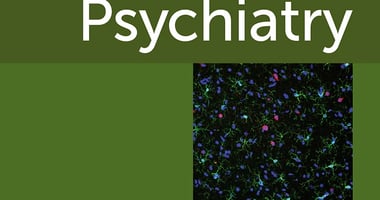Two articles published last year in the American Journal of Psychiatry have been named “top stories...
AJP Articles Make NEJM Journal Watch Psychiatry, BBRF’s Top 10 for 2017
 |
One article—“Adjunctive Bright Light Therapy for Bipolar Depression: A Randomized Double-Blind Placebo-Controlled Trial,” by Dorothy K. Sit, M.D., et al.—appeared on both lists. As Sit and colleagues explained in the AJP article, there is a growing interest in nonpharmacological approaches to treat bipolar depression, after many medications used to treat the disorder have proven ineffective and/or produce adverse effects, including mood switching. The researchers discovered that exposing patients with bipolar depression on stable antimanic medications to midday bright white light led to reductions in their depression scores after six weeks compared with those in the control group. Importantly, no hypomania, dramatic mood switching, or serious side effects were observed during the study.
The other study named on NEJM Journal Watch Psychiatry’s Top 10 list was “KINECT 3: A Phase 3 Randomized, Double-Blind, Placebo-Controlled Trial of Valbenazine for Tardive Dyskinesia,” by Robert A. Hauser, M.D., M.B.A., et al. This study found that once-daily treatment with valbenazine at 80 mg/day significantly improved the symptoms of tardive dyskinesia compared with placebo in a population of patients with schizophrenia, schizoaffective disorder, or a mood disorder. The medication was generally well tolerated, even among patients taking concomitant antipsychotics, and the psychiatric status of the patients remained stable throughout the trial.
In addition to the article by Sit and colleagues referenced above, the following studies were selected by BBRF in its list of the top advancements and breakthroughs by Foundation grantees in 2017 (in chronological order):
- “Multimodal Neuroimaging of Frontolimbic Structure and Function Associated With Suicide Attempts in Adolescents and Young Adults With Bipolar Disorder,” by Jennifer A.Y. Johnston, M.A., et al. Relying on multiple MRI techniques, the authors of this study compared brain images of 68 participants aged 14 to 25 with bipolar disorder who did or did not have a prior suicide attempt. Their analysis revealed significant differences in brain structure and connectivity between these two groups. Intriguingly, among suicide attempters, reduced connections to the left or right prefrontal cortex were correlated with more serious suicidal ideation or suicide attempts, respectively.
- “Effect of a Novel NMDA Receptor Modulator, Rapastinel (Formerly GLYX-13), in OCD: Proof of Concept,” by Carolyn I. Rodriguez, M.D., Ph.D., et al. In this small, open-label trial, Rodriguez and colleagues found that unmedicated patients with obsessive-compulsive disorder who received a single intravenous dose of rapastinel reported a drop in obsessive-compulsive, depression, and anxiety severity scores within 90 minutes of the infusion. The effects were short-lived, however, with no significant effects on symptoms seen one week later.
- “The Effect of a Single Dose of Intravenous Ketamine on Suicidal Ideation: A Systematic Review and Individual Participant Data Meta-Analysis,” by Samuel T. Wilkinson, M.D., et al. A single infusion of ketamine appears to significantly reduce suicidal thoughts in depressed patients in as little as one day, with benefits lasting for up to one week, according to this meta-analysis. Notably, after controlling for improvement in severity of depressive symptoms, ketamine’s effects on suicidal ideation remained significant. This suggests that ketamine has a specific effect on suicidal ideation that depends only partly on change in overall severity of depressive symptoms.
To see a list of the AJP articles that were recognized last year, click here.





